JPEG
JPEG( Joint Photographic Experts Group)即联合图像专家组,是用于连续色调静态图像压缩的一种标准,文件后缀名为.jpg或.jpeg,是最常用的图像文件格式。
其主要是采用预测编码(DPCM)、离散余弦变换(DCT)以及熵编码的联合编码方式,以去除冗余的图像和彩色数据,属于有损压缩格式,它能够将图像压缩在很小的储存空间,一定程度上会造成图像数据的损伤。尤其是使用过高的压缩比例,将使最终解压缩后恢复的图像质量降低,如果追求高品质图像,则不宜采用过高的压缩比例。
概述
JPEG在文件中以Segment的形式组织 ,它具有以下特点:
1、均以0xFF开始,后跟1byte的Marker和2byte的Segment length(包含表示Length本身所占用的2byte,不含0xFF+Marker所占用的2byte);
2、采用 Motorola序(相对于Intel序),即保存时高位在前,低位在后;
3、Data部分中,0xFF后若为0x00,则跳过此字节不予处理。
JPEG编码
1)零偏置:JPEG编码将图像分为8×8的块作为数据处理的最小单位,对于灰度级为2^n 的像素,通过减去2^(n-1),将无符号整数变为有符号数,即值域变为正负对称,将像素灰度的绝对值控制在小范围内,提高编码效率;
2)DCT变换:将图像分为8×8的像块,如果图像的宽(高)不是8的整数倍,使用图像边缘像素填充,以不改变频谱分布。实现能量集中和去相关,降低空间冗余度;
3)量化:利用人眼视觉特性设计而成的矩阵量化DCT系数,减小视觉冗余。因为人眼对亮度信号比色差信号更敏感,因此使用了两种量化表:亮度量化值和色差量化值;根据人眼对低频敏感,对高频不太敏感,对低频分量采取较细的量化,对高频分量采取较粗的量化。JPEG标准中采用中平型均匀量化,输入DCT系数,输出量化系数;
4)DC系数差分编码:8×8像块经过DCT后得到的DC系数有两个特点:一是系数的值较大;二是相邻像块的DC系数存在相关性(即存在冗余),可采用DPCM对相邻图像块之间量化DC系数的插值进行编码;
5)AC系数之字形扫描:由于经DCT变换后,系数大多数集中在左上角,即低频分量区,因此采用Z字形按频率的高低顺序读出;
6)AC系数游程编码:当遇到很多连续的0时,为缩短数据长度,编码非零系数level和它之前0的个数run,(Run,level)。如:0,0,3,0,2,0,0,0,1–>游程编码:(2,3),(2,2),(3,1),在最后,如果都是零,给出 EOB (End of Block)即可;
7)Huffman编码:对DC系数DPCM的结果和AC系数RLE的结果进行Huffman编码。
JPEG解码
- 读取文件
- 解析文件segment
- 以MCU为单位进行编码
- 丢弃填充的行或列
- 反0偏置
- 对丢失的CbCr分量插值
- YCbCr →RGB
代码分析
结构体分析
huffman_table,该结构体用来存储Huffman表
struct huffman_table
{
/* Fast look up table, using HUFFMAN_HASH_NBITS bits we can have directly the symbol,
* if the symbol is <0, then we need to look into the tree table */
short int lookup[HUFFMAN_HASH_SIZE]; //获取权值对应的码字
/* code size: give the number of bits of a symbol is encoded */
unsigned char code_size[HUFFMAN_HASH_SIZE]; //获取权值对应的码长
/* some place to store value that is not encoded in the lookup table
* FIXME: Calculate if 256 value is enough to store all values
*/
uint16_t slowtable[16-HUFFMAN_HASH_NBITS][256]; //当码长>9时,交给该表处理
};Component,该结构体用来存储解码信息,这一段定义了水平方向和垂直方向的采样因子,量化表的指针,AC系数和DC系数的Huffman码表的指针
struct component //8x8块结构体
{
unsigned int Hfactor;
unsigned int Vfactor; //水平垂直采样因子
float *Q_table; /* Pointer to the quantisation table to use */ //指向该component解码时要用的量化表
struct huffman_table *AC_table;
struct huffman_table *DC_table; //分别对应AC系数和DC系数的Huffman表
//以上是解码过程中要使用的东西,以下是解码过程中临时存储的东西
short int previous_DC; /* Previous DC coefficient */ //存储前一个DC值,用于DPCM解码
//在进行Huffman编码之前,DC系数采用了DPCM,因此每解完一个DC系数就要存起来用于下一个DC系数的解码
short int DCT[64]; /* DCT coef */ //保存DCT的系数
#if SANITY_CHECK
unsigned int cid;
#endif
};Jdec_private,定义了JPEG数据流结构体,用来指示解码过程中所用到的信息,如图像数据、量化表、Huffman码表等,并定义了存储IDCT解码后的像素值的变量
struct jdec_private
{
/* Public variables */
uint8_t *components[COMPONENTS]; //定义指针数组,指向三种分量用于存放解码后数据的数组的地址
unsigned int width, height; /* Size of the image */ //图像宽高
unsigned int flags;
/* Private variables */
const unsigned char *stream_begin, *stream_end; //标记数据流的开始和结束
unsigned int stream_length; //数据流长度
const unsigned char *stream; /* Pointer to the current stream */ //当前解码流指针,用指向函数的指针来操作函数
unsigned int reservoir, nbits_in_reservoir;
struct component component_infos[COMPONENTS]; //存放三种分量的component信息
float Q_tables[COMPONENTS][64]; /* quantization tables */ //每个分量都有一张量化表
struct huffman_table HTDC[HUFFMAN_TABLES]; /* DC huffman tables */
struct huffman_table HTAC[HUFFMAN_TABLES]; /* AC huffman tables */
int default_huffman_table_initialized;
int restart_interval;
int restarts_to_go; /* MCUs left in this restart interval */
int last_rst_marker_seen; /* Rst marker is incremented each time */
/* Temp space used after the IDCT to store each components */
uint8_t Y[64*4], Cr[64], Cb[64]; //保存每个块经过IDCT解码后的像素
jmp_buf jump_state;
/* Internal Pointer use for colorspace conversion, do not modify it !!! */
uint8_t *plane[COMPONENTS]; //用于彩色空间转换
};解码核心函数
int convert_one_image(const char *infilename, const char *outfilename, int output_format)
{
FILE *fp;
unsigned int length_of_file;
unsigned int width, height;
unsigned char *buf;
struct jdec_private *jdec; //定义结构体
unsigned char *components[3];
/* Load the Jpeg into memory */ //将所有文件全部读入
fp = fopen(infilename, "rb"); //打开输入文件
if (fp == NULL)
exitmessage("Cannot open filename\n");
length_of_file = filesize(fp); //获取输入文件大小
buf = (unsigned char *)malloc(length_of_file + 4);
if (buf == NULL)
exitmessage("Not enough memory for loading file\n");
fread(buf, length_of_file, 1, fp); //将文件内容读入buf
fclose(fp); //关闭文件
/* Decompress it */
jdec = tinyjpeg_init(); //初始化
if (jdec == NULL)
exitmessage("Not enough memory to alloc the structure need for decompressing\n");
if (tinyjpeg_parse_header(jdec, buf, length_of_file)<0) //文件是否可解码
exitmessage(tinyjpeg_get_errorstring(jdec));
/* Get the size of the image */
tinyjpeg_get_size(jdec, &width, &height); //得到文件大小
snprintf(error_string, sizeof(error_string),"Decoding JPEG image...\n");
if (tinyjpeg_decode(jdec, output_format) < 0) //解码
exitmessage(tinyjpeg_get_errorstring(jdec));
/*
* Get address for each plane (not only max 3 planes is supported), and
* depending of the output mode, only some components will be filled
* RGB: 1 plane, YUV420P: 3 planes, GREY: 1 plane
*/
tinyjpeg_get_components(jdec, components);
/* Save it */
switch (output_format) //解码后按照想要的格式保存文件内容
{
case TINYJPEG_FMT_RGB24:
case TINYJPEG_FMT_BGR24:
write_tga(outfilename, output_format, width, height, components);
break;
case TINYJPEG_FMT_YUV420P:
write_yuv(outfilename, width, height, components);
break;
case TINYJPEG_FMT_GREY:
write_pgm(outfilename, width, height, components);
break;
}
/* Only called this if the buffers were allocated by tinyjpeg_decode() */
tinyjpeg_free(jdec);
/* else called just free(jdec); */
free(buf);
return 0;
}parse_DQT 解码量化表
static int parse_DQT(struct jdec_private *priv, const unsigned char *stream)
{
int qi;
float *table;
const unsigned char *dqt_block_end;
#if TRACE //写到trace文件中
fprintf(p_trace,"> DQT marker\n");
fflush(p_trace);
#endif
dqt_block_end = stream + be16_to_cpu(stream); //量化表最后的位置
stream += 2; /* Skip length */
while (stream < dqt_block_end)
{
qi = *stream++;
#if SANITY_CHECK
if (qi>>4)
snprintf(error_string, sizeof(error_string),"16 bits quantization table is not supported\n");
if (qi>4)
snprintf(error_string, sizeof(error_string),"No more 4 quantization table is supported (got %d)\n", qi);
#endif
table = priv->Q_tables[qi];
build_quantization_table(table, stream); //得到量化表
stream += 64;
}
#if TRACE
fprintf(p_trace,"< DQT marker\n");
fflush(p_trace);
#endif
return 0;
}parse_DHT 解码Huffman码表,同时写入trace文件
static int parse_DHT(struct jdec_private *priv, const unsigned char *stream)
{
unsigned int count, i;
unsigned char huff_bits[17];
int length, index;
length = be16_to_cpu(stream) - 2; //表长(可能有多张表)
stream += 2; /* Skip length */
#if TRACE
fprintf(p_trace,"> DHT marker (length=%d)\n", length);
fflush(p_trace);
#endif
while (length>0) {
index = *stream++;
/* We need to calculate the number of bytes 'vals' will takes */
huff_bits[0] = 0;
count = 0;
for (i=1; i<17; i++) {
huff_bits[i] = *stream++;
count += huff_bits[i];
}
#if SANITY_CHECK
if (count >= HUFFMAN_BITS_SIZE)
snprintf(error_string, sizeof(error_string),"No more than %d bytes is allowed to describe a huffman table", HUFFMAN_BITS_SIZE);
if ( (index &0xf) >= HUFFMAN_TABLES)
snprintf(error_string, sizeof(error_string),"No more than %d Huffman tables is supported (got %d)\n", HUFFMAN_TABLES, index&0xf);
#if TRACE
fprintf(p_trace,"Huffman table %s[%d] length=%d\n", (index&0xf0)?"AC":"DC", index&0xf, count);
fflush(p_trace);
#endif
#endif
if (index & 0xf0 ) //AC系数的Huffman表
build_huffman_table(huff_bits, stream, &priv->HTAC[index&0xf]);
else //DC系数的Huffman表
build_huffman_table(huff_bits, stream, &priv->HTDC[index&0xf]);
length -= 1;
length -= 16;
length -= count;
stream += count;
}
#if TRACE
fprintf(p_trace,"< DHT marker\n");
fflush(p_trace);
#endif
return 0;
}保存yuv文件
static void write_yuv(const char *filename, int width, int height, unsigned char **components)
{
FILE *F;
char temp[1024];
//yuv写成三个文件
snprintf(temp, 1024, "%s.Y", filename);
F = fopen(temp, "wb");
fwrite(components[0], width, height, F);
fclose(F);
snprintf(temp, 1024, "%s.U", filename);
F = fopen(temp, "wb");
fwrite(components[1], width*height/4, 1, F);
fclose(F);
snprintf(temp, 1024, "%s.V", filename);
F = fopen(temp, "wb");
fwrite(components[2], width*height/4, 1, F);
fclose(F);
printf("write yuv begin!\n");
//yuv都写入一个文件
snprintf(temp, 1024, "%s.yuv", filename);
F = fopen(temp, "wb");
fwrite(components[0], width, height, F); //写Y
fwrite(components[1], width * height / 4, 1, F);
fwrite(components[2], width * height / 4, 1, F); //写UV
fclose(F); //关闭文件
printf("write yuv done!\n");
}Main.cpp
int main(int argc, char *argv[])
{
int output_format = TINYJPEG_FMT_YUV420P;
char *output_filename, *input_filename;
clock_t start_time, finish_time;
unsigned int duration;
int current_argument;
int benchmark_mode = 0;
#if TRACE //设定trace,边解码边写入文件
p_trace=fopen(TRACEFILE,"w");
if (p_trace==NULL)
{
printf("trace file open error!");
}
#endif
if (argc < 3)
usage();
current_argument = 1;
while (1)
{
if (strcmp(argv[current_argument], "--benchmark")==0) //strcmp字符串比较,用于比较两个字符串,如果二者相等返回0
benchmark_mode = 1; //如果相等,说明设置了benchmark,因此benchmark_mode置1
else
break;
current_argument++;
}
if (argc < current_argument+2)
usage();
input_filename = argv[current_argument]; //输入文件名,是argv[1]
if (strcmp(argv[current_argument+1],"yuv420p")==0) //argv[2]判断输出格式,这里选择yuv420p
output_format = TINYJPEG_FMT_YUV420P;
else if (strcmp(argv[current_argument+1],"rgb24")==0)
output_format = TINYJPEG_FMT_RGB24;
else if (strcmp(argv[current_argument+1],"bgr24")==0)
output_format = TINYJPEG_FMT_BGR24;
else if (strcmp(argv[current_argument+1],"grey")==0)
output_format = TINYJPEG_FMT_GREY;
else
exitmessage("Bad format: need to be one of yuv420p, rgb24, bgr24, grey\n");
output_filename = argv[current_argument+2]; //输出文件名,设为argv[3]
start_time = clock(); //开始
if (benchmark_mode) //是否多次解码,若设置了benchmark_mode就调用load_multiple_times,否则就调用convert_one_image
load_multiple_times(input_filename, output_filename, output_format);
else
convert_one_image(input_filename, output_filename, output_format); //核心函数
finish_time = clock(); //结束
duration = finish_time - start_time;
snprintf(error_string, sizeof(error_string),"Decoding finished in %u ticks\n", duration);
#if TRACE
fclose(p_trace);
#endif
return 0;
}实验结果
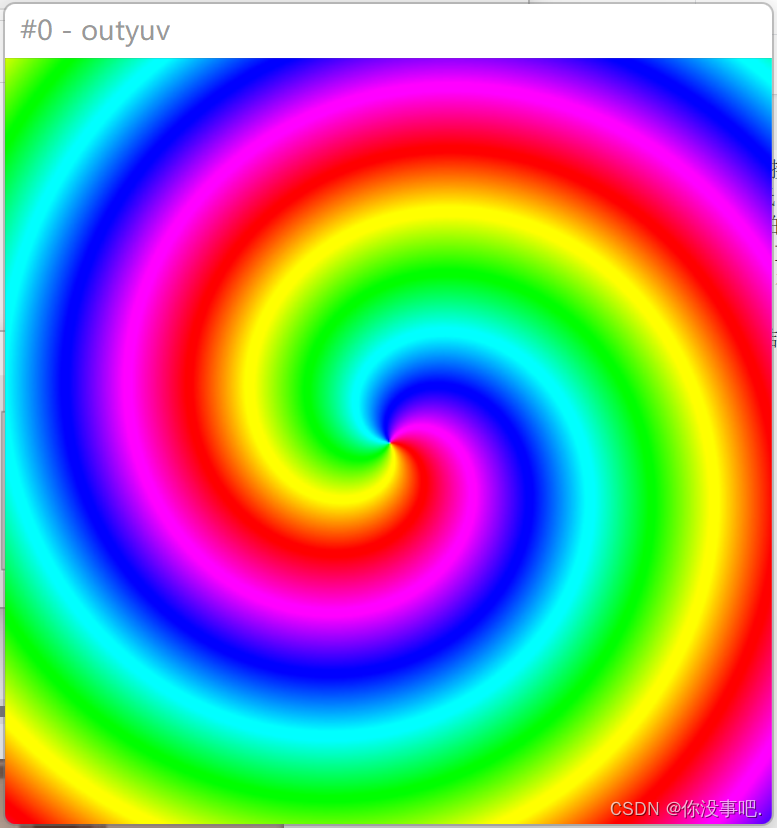
输出的Huffman码表
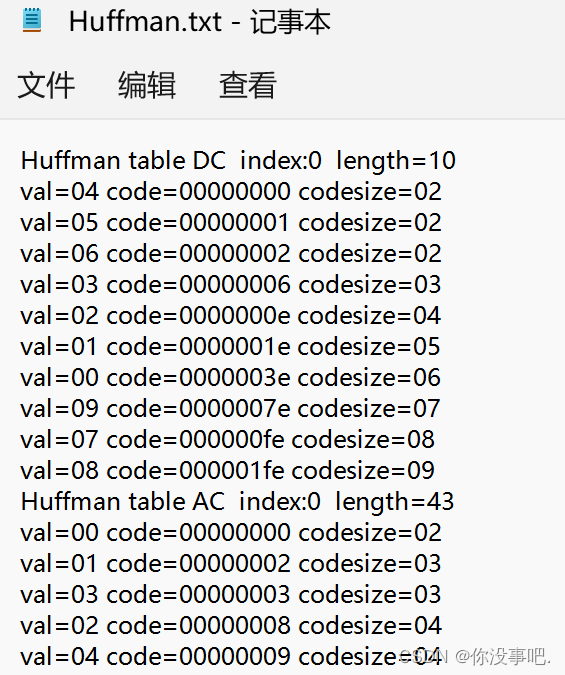
AC&DC图像及其概率分布
| 图像 | 概率分布 | |
| AC | 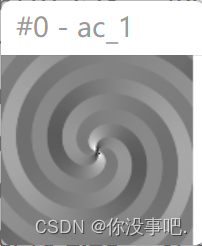 | 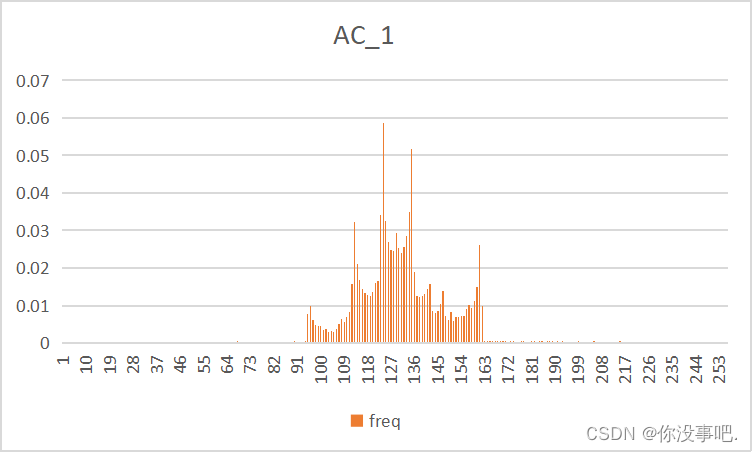 |
| DC | 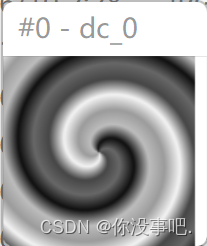 | 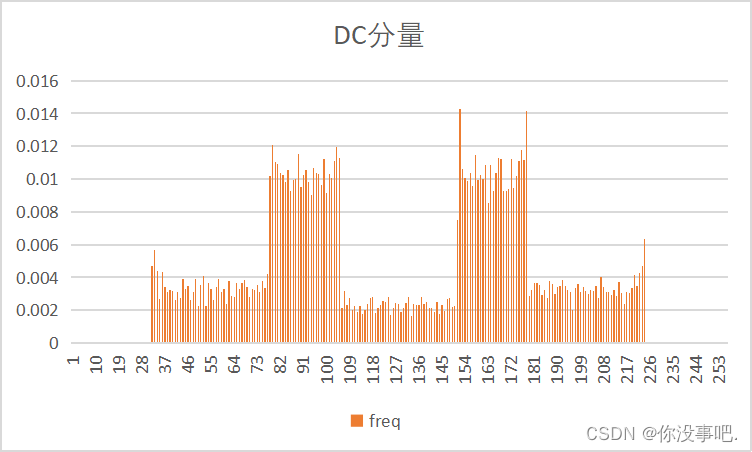 |





















 376
376











 被折叠的 条评论
为什么被折叠?
被折叠的 条评论
为什么被折叠?








